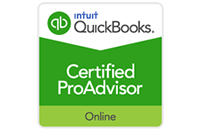They say that the only things that are certain in life are death and taxes. And taxes are an especially important reality for business owners. If you previously worked for another company or employer, chances are good that you had taxes withheld from your paycheck to cover your annual tax liability. But what you may not know is that the company was also responsible for paying a portion of your taxes – specifically, half of your obligation for Social Security and Medicare.
As a business owner, you become responsible for the full amount owed for Social Security and Medicare, in addition to your other tax liabilities. So now that you’re self-employed, let’s take a look at the taxes you may owe and how to handle them.
How Do I Know if I Owe Self-Employment Taxes?
This one is fairly straightforward. If you earned more than $400 in self-employment income during any one calendar year, you’ll owe self-employment taxes on that amount. This includes any income drawn from:
• Sole proprietorships
• Partner stakes in a business partnership
• Membership in a Limited Liability Corporation (LLC)
• Independent Contractors (including freelancing and jobs like driving for Lyft or Uber)
Do I Owe Taxes if I Own A Corporation?
There are two types of corporation (beyond LLCs) that a business can incorporate as – an S-Corp or a C-Corp. Both types of corporation are intended to shield the owner(s) from personal legal liability in the event of a lawsuit being filed against the business.
For tax purposes, these two types of corporation operate very differently. An S-Corp is not taxed, so all business income is passed along to the owner(s) that draw dividends from the company’s profits. This income is then reported on the owner’s personal tax return as net self-employment income, and the owner would pay self-employment tax on all income from this category.
A C-Corp on the other is considered a completely separate legal entity. Owners of C-Corporations can be taxed twice – once as the business on any profit generated, and once as an individual on any distributions or payments drawn from the business; however, this income isn’t subject to self-employment tax.
Estimated Self-Employment Taxes
One way to avoid a surprising tax bill at the end of the year is to make quarterly estimated tax payments. Your accountant can help you figure out how much these payments should be and file them on time with the IRS. Keep in mind that underpaying your taxes can result in penalties and fines from the IRS. Estimated tax payments are due on the following schedule:
• Pay Period: January 1 – March 31 | Due Date: April 15
• Pay Period: April 1 – May 31 | Due Date: June 15
• Pay Period: June 1 – August 31 | Due Date: September 15
• Pay Period: September 1 – December 31 | Due Date: January 15
You can file your estimated tax payments electronically with the IRS, or your accountant can help you make these payments.
Reducing Your Self-Employment Taxes
There are two big ways to reduce your self-employment tax liability:
• Increase your business deductions.
• Change the corporate structure of your business.
Taking advantage of all the deductions available to you for your business can go a long way toward lowering your tax bill. Any good accountant will be able to help you identify deduction opportunities that you might otherwise miss, like travel expenses, home offices, etc.
Before changing your company’s business structure, have a discussion with your accountant about what you want to accomplish. They’ll be able to tell you what the best solution is for your specific situation.
As always, please note that incorporation and business taxes are complex topics, and that your best bet is to ask your CPA or accountant for advice on your business’ structure and your tax situation.



